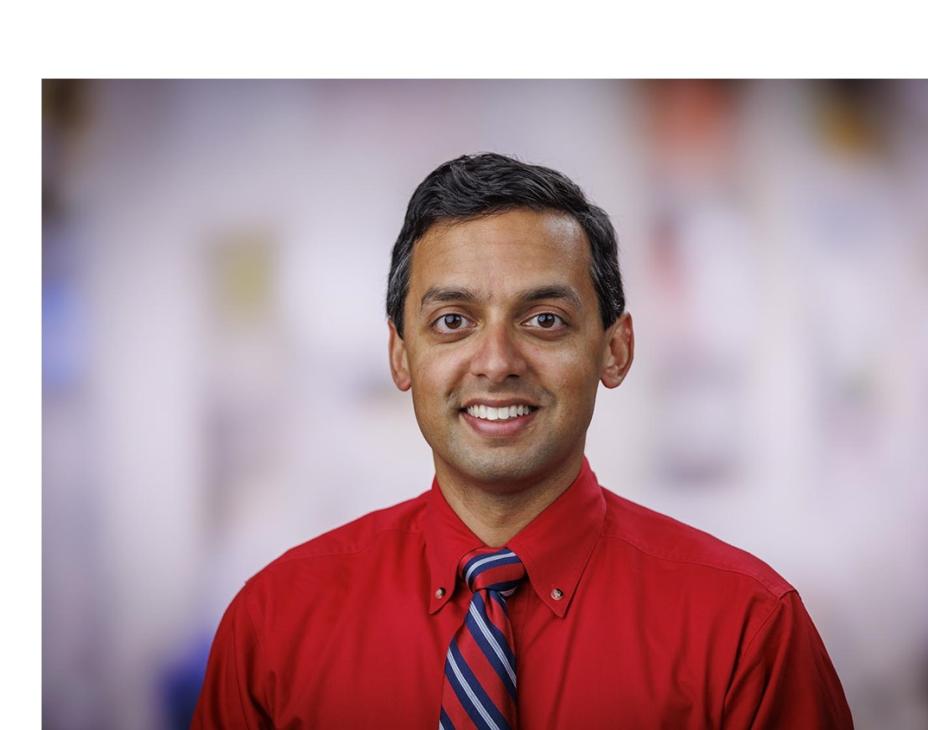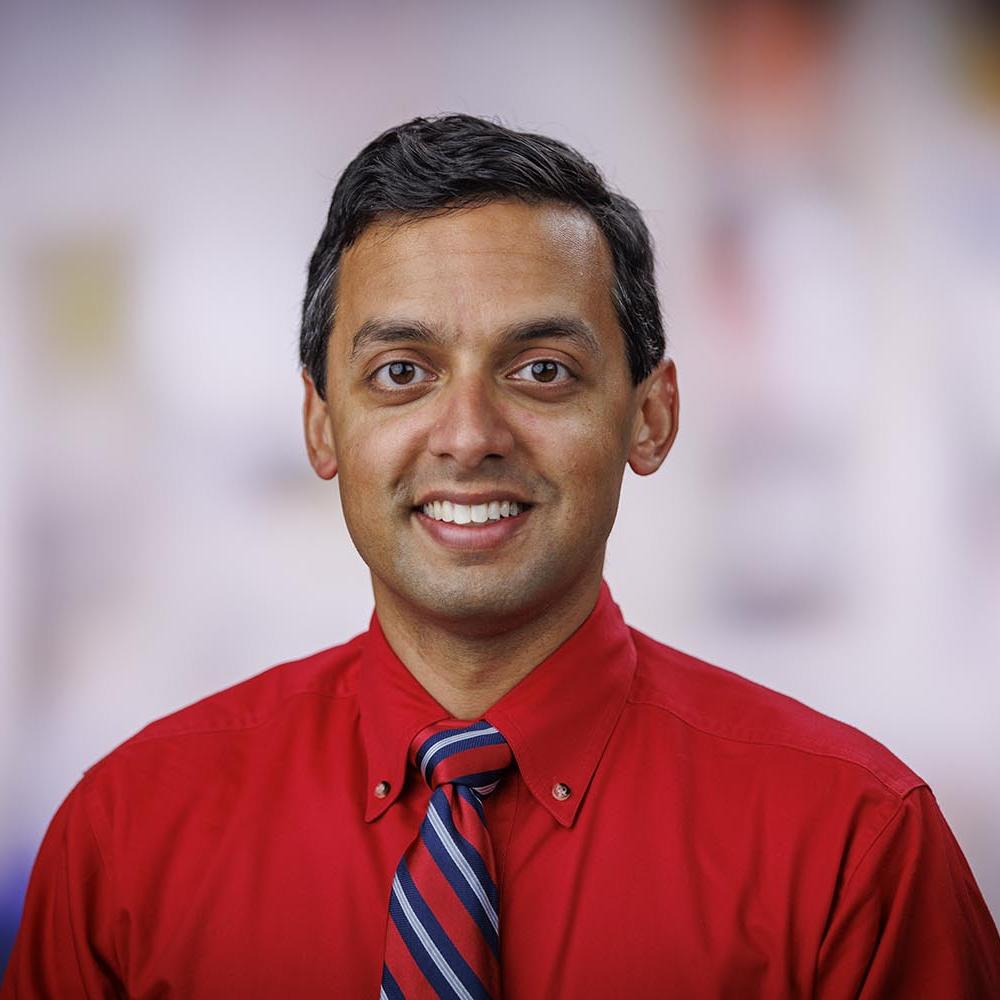These researchers have dedicated their careers to finding new treatments and cures for people with cancer.

Fortunately, physician-scientists like Rahul Banerjee, MD, FACP, of the Fred Hutch Cancer Center in Seattle, Washington, are working to address this problem through research. Here, Dr. Banerjee explains how he’s using Conquer Cancer Young Investigator Award (YIA) grant funding to improve supportive care and quality of life for patients.
What first drew you to oncology research and cancer care?
RB: My first clinical research project during medical school focused on how often physicians discuss fertility with young patients with breast cancer—and, more importantly, how well patients recall these discussions. Only about half of patients had any mention of discussions around fertility preservation in their medical record, and only half of those patients recalled the discussions in subsequent surveys. This opened my eyes to one of the biggest challenges in oncology: As cancer treatments get more and more specialized, how do we improve supportive care and survivorship down the line?
What compelled you to focus on improving quality of life for patients undergoing treatment for multiple myeloma? Why is it important to advance supportive care for this patient population?
RB: My interest in multiple myeloma stemmed from Dr. Nina Shah, my phenomenal research mentor. She had previously led a clinical trial of higher versus lower stem cell doses to improve symptom management for patients undergoing transplantation for myeloma. Dr. Shah instilled the importance of supportive care in me early. Studies have shown that patients with myeloma have some of the worst quality of life of any type of cancer, in part because myeloma is incurable and in part because so many of our medications (while very effective) can have long-term side effects. We felt that if we could develop a strategy to help patients build resilience during stem cell transplantation, then those strategies would hopefully become self-sustaining to help patients in years to come.
Can you share a story about how your Conquer Cancer-funded research has affected a patient’s improved quality of life?
RB: I am forever grateful for the role that Conquer Cancer has had in my research career. Many of my patients have benefited from the Conquer Cancer-funded intervention as well. In brief, we ran a randomized controlled trial of digital life coaching (DLC) versus standard care in patients with myeloma undergoing transplantation. I remember one patient in his late 70s who didn’t think that coaching would be very helpful given the difficulty of “teaching an old dog new tricks.” A few months later, not only was he on a first-name basis with his coach (whom he communicated with by text and email), but he was [also] walking more and generally using his smartphone much more than he thought he’d be doing. Supportive care interventions must be “sticky” to work, meaning that they must easily fit into a patient’s daily routines and activities. Seeing that the coaching stuck with him was very fulfilling!
What does it feel like when you realize that a patient’s successful outcomes have a direct relationship to the work and research you’re doing?
RB: It’s one of the best feelings in the world. My focus on improving quality of life for patients with multiple myeloma has now expanded to personalizing medication doses as well, and so one of my big research interests is lowering how much dexamethasone (a treatment that provides relief for inflammation) patients need to take. Dexamethasone has been a historical component of our myeloma treatment toolbox but has many side effects and has largely been overshadowed by newer and more effective drugs. Every now and then, when I suggest lowering a patient’s dexamethasone, they often tell me, “I Googled you and saw your research about this!” It’s not only a fulfilling feeling, but also a reminder about the importance of patient-centered research.
Why did you choose to focus your Conquer Cancer-funded project on the effectiveness of DLC to improve quality of life for patients in treatment for multiple myeloma?
RB: Dr. Shah and I noticed that many of our patients were on sleep or anxiety medications within the first year of their myeloma diagnosis. These types of medications are not recommended in older adults given their risk of delirium and altered mental status. Even for younger adults, these medications are difficult to “de-prescribe”—meaning that once they are started, it’s trickier both physically and psychologically to stop them. Our patients with myeloma are already on so many pills—the medical term for this is “polypharmacy”—and we wondered whether these new medications were contributing to that.
How did you develop the methodology and approach that you used for your study? What did that look like?
RB: My mentor, Dr. Nina Shah, proposed a randomized controlled trial of DLC, whereby patients would get 16 weeks of access to a certified life coach via phone calls and text messages versus standard care in patients with multiple myeloma undergoing transplantation. Dr. Anand Dhruva, an expert in behavioral interventions in oncology, mentored me on the study design and endpoints. He pointed out that increased attention to one’s symptoms can affect how those symptoms are perceived. For example, constantly being asked about sleep can be a motivating factor to try to work on improving sleep quality. As such, he had the excellent idea of an “attention control” to make sure that both arms received some type of intervention as well. We thus developed wellness-related handouts (developed with input from patients and nurses) that all patients received in both arms. This was a way of helping ensure that every patient potentially benefited in some way from our study interventions while also making our results more robust.
What are some examples of resources that your Conquer Cancer grant enabled you to access that you might otherwise have lacked?
RB: My Conquer Cancer grant was critical in helping this study move forward despite the early years of the COVID-19 pandemic. We used the funds to pay for life coaching subscriptions for half of the study participants and the time and effort of a research coordinator. We used a free database to collect patient-reported outcomes from study participants, but—prior to working with a research coordinator directly—I had no idea how time-involved this research process is. We absolutely would not have been able to launch this study without Conquer Cancer support.
Two key takeaways from your YIA study were A) compared to standard handouts for supportive care, DLC improved physical quality of life for patients following treatment, and B) patients using DLC had significant reductions in emotional distress. What barriers currently exist that prevent patients and oncology professionals from implementing DLC?
RB: For patients, we need strategies to avoid creating a “digital divide” for patients who don’t own cell phones and thus can’t communicate with a coach by call or text. Similarly, our study only enrolled English-speaking patients, and we are thus working on developing content in other languages. For physicians and cancer centers, the question about data privacy comes up a lot since the life coaches are not employed by a hospital. Similarly, I worried that increased attention to symptoms in the DLC arm would lead to an increase in electronic messages and phone calls to already busy oncology care teams. Thankfully, this fear proved unfounded. Patients were intuitively able to work with their coaches on wellness-related tasks (e.g., walking more and sleeping more) while saving clinical questions for their myeloma team.
You mentioned the next steps in your research are to measure DLC’s effectiveness across two studies that could potentially enroll as many as 150 patients. Can you share more about your progress with this project expansion, and what you hope or expect to learn?
RB: We have two active studies of DLC in patients with relapsed or refractory multiple myeloma open at the Fred Hutch Cancer Center. If a patient can see me once by telehealth or in-person, they do not have to be receiving treatment at our institution. I’m excited about these studies in part because they also incorporate a wearable device that patients can keep. Many studies have suggested that just giving a patient a wearable activity tracker doesn’t improve their physical activity by itself: Supportive care interventions must be “sticky” to work. We hope that by pairing the wearable activity tracker with the accountability of a life coach, the two wellness strategies can improve on each other.
Five years from now, what advances do you envision for this area of cancer research?
RB: I hope to see many more advances in DLC to serve patients more easily. When done right, DLC has many strengths; patients around the country can easily receive support with improving their lives from the convenience of their phone, and a centralized cadre of coaches can gain expertise over time with their supportive care needs. There are many other scenarios besides multiple myeloma where DLC may be helpful in oncology, such as transplantation, CAR T therapy, complex cancer surgeries, and more. I hope to see more real-world adoption outside of clinical trials once we prove its value.
Read about how Jerry Butterfield—one of Dr. Banerjee's patients—has benefitted from Dr. Banerjee's Conquer-Cancer–funded research.
